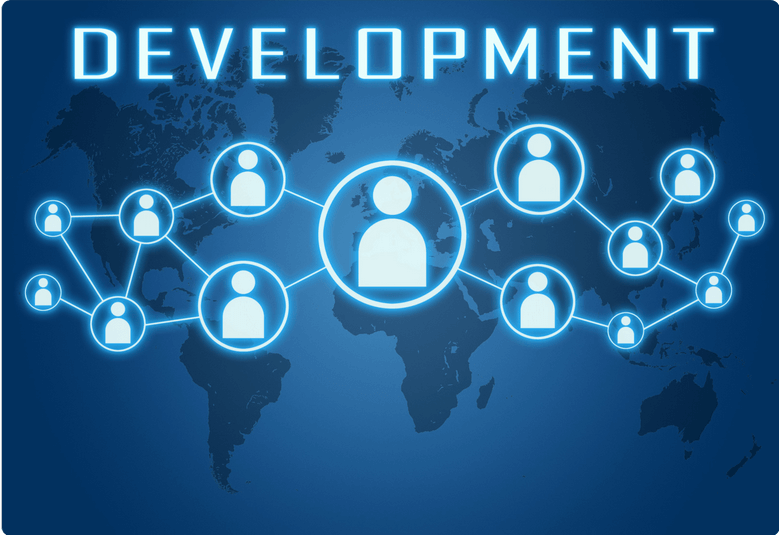Installing Magento Development: Choose the Right Path for Your Business
Before you start building your online store, you need to install Magento Development. There are two editions available: Magento Open Source and Magento Commerce. The former is a free, community-supported version, while the latter offers advanced features and excellent support.
Configuring Your Store: Mastering the Admin Panel
The Magento Admin Panel is the nerve center of your online store. You’ll configure settings, manage orders, and track customer data here. Familiarize yourself with these key areas:
- General Configuration: Set your store’s basic information, such as its name, locale, and currency.
- Catalog Management: Organize and manage your products using categories, attributes, and inventory settings.
- Order Management: Process and monitor customer orders, shipments, and invoices.
- Customer Management: Keep track of customer data, including personal information, order history, and wishlists.
- Marketing Tools: Create and manage promotions, discounts, and email campaigns.
Customizing Magento: Themes and Extensions
Magento’s robust ecosystem offers many themes and extensions to tailor your store’s appearance and functionality. Here’s how to make the most of them:
- Themes: Choose a responsive, SEO-friendly theme that aligns with your brand’s identity. You can find both free and premium articles in the Magento Marketplace.
- Extensions: Enhance your store’s capabilities by installing extensions that meet your requirements. These can range from payment gateways to analytics tools. Be mindful of compatibility and performance impacts when choosing extensions.
Magento Development: Enhancing Functionality
If you need custom functionality that isn’t available through themes or extensions, you can delve into Magento development. Magento is built on PHP and utilizes the Model-View-Controller (MVC) architecture, so a solid understanding of these concepts is essential. Here are some key development areas to explore:
- Custom Modules: Create reusable components that add new features to your store. Follow Magento’s best practices to ensure seamless integration and maintainability.
- API Integration: Connect your store with third-party services, such as CRMs or ERPs, using Magento’s REST and GraphQL APIs.
- Frontend Development: Customize your store’s appearance using HTML, CSS, JavaScript, and Magento’s frontend libraries, like LESS and RequireJS—Leverage Magento’s Progressive Web App (PWA) Studio to build fast, engaging mobile experiences.
Performance Optimization: Boost Your Store’s Speed
A fast-loading store is crucial for customer satisfaction and SEO rankings. Implement these performance optimization techniques to keep your store running smoothly:
- Caching: Enable Magento’s built-in caching mechanisms, such as Full Page Cache (FPC) and Varnish, to reduce server load and improve response times.
- Image Optimization: Compress and resize images to reduce their file size without sacrificing quality. Consider using a Content Delivery Network (CDN) to serve images faster.
- Code Optimization: Minify and concatenate JavaScript and CSS files to reduce their size and improve loading times. Eliminate render-blocking resources and prioritize critical assets.
- Database Optimization: Regularly clean and optimize your database to ensure efficient retrieval. Utilize indexes and query optimization techniques to reduce database load.
- Server Configuration: Choose a high-performance hosting environment optimized for Magento, and fine-tune server settings to match your store’s needs.
Security Measures: Protecting Your Online Business
Safeguarding your store against cyber threats is essential for building customer trust and maintaining a solid online presence. Implement these security best practices:
- Keep Magento Updated: Regularly update your Magento installation, themes, and extensions to the latest versions, often including security patches and improvements.
- Secure Connection: Implement HTTPS using SSL certificates to encrypt data transmitted between your store and customers, protecting sensitive information like login credentials and payment details.
- Password Policies: Enforce strong password policies for admin users and customers, including minimum length, complexity, and expiration rules.
- Two-Factor Authentication (2FA): Enable 2FA for admin users to add an extra layer of security to the login process.
- Regular Backups: Create regular backups of your store’s data and files, and store them securely offsite. This will allow you to recover quickly in case of a security breach or data loss.
By mastering Magento development and implementing these optimization and security measures, you’ll be well on your way to building a thriving, high-performing e-commerce store. Remember, continuously learning, adapting, and refining your approach is the key to success.
FAQs
What does a Magento developer do?
A Magento developer specializes in building, customizing, and maintaining e-commerce websites using the Magento platform. Their primary responsibilities include:
- Store Setup: A Magento developer helps businesses set up online stores by installing and configuring Magento, selecting the appropriate edition (Open Source or Commerce), and configuring general settings.
- Theme Customization: They customize the appearance of a store by selecting and modifying responsive, SEO-friendly themes that match the brand’s identity. This may involve working with HTML, CSS, JavaScript, and Magento-specific frontend libraries.
- Extension Development and Integration: Magento developers create custom modules or integrate existing extensions to enhance the store’s functionality. They ensure attachments are compatible with the store’s version and do not adversely impact performance.
- Custom Functionality: When out-of-the-box features don’t meet a business’s unique requirements, a Magento developer builds custom solutions using PHP and the Magento framework, adhering to best practices for maintainability and compatibility.
- API Integration: They integrate the Magento store with third-party services, such as CRMs, ERPs, payment gateways, or shipping providers, using REST and GraphQL APIs to streamline data exchange between systems.
- Performance Optimization: Magento developers work to improve the store’s loading speed and overall performance by implementing caching mechanisms, optimizing images, minifying code, optimizing database queries, and fine-tuning server configurations.
- Security: They ensure the store’s safety by keeping the Magento installation, themes, and extensions up to date, implementing HTTPS, enforcing strong password policies, enabling two-factor authentication, and conducting regular backups.
- Maintenance and Support: Magento developers provide ongoing maintenance and support, troubleshooting and resolving issues and ensuring the store’s smooth operation over time.
In summary, a Magento developer leverages their technical expertise and understanding of the Magento platform to create, customize, and maintain high-quality e-commerce stores that cater to a business’s unique needs and provide an exceptional user experience.
What programming language does Magento use?
Magento primarily uses the PHP programming language. As an open-source e-commerce platform, Magento is built on PHP, which is a widely-used server-side scripting language designed for web development. Magento also utilizes other web technologies, such as HTML, CSS, JavaScript, and XML, along with PHP for its frontend and backend components. Additionally, the platform is based on the Zend Framework and follows the Model-View-Controller (MVC) architecture.





